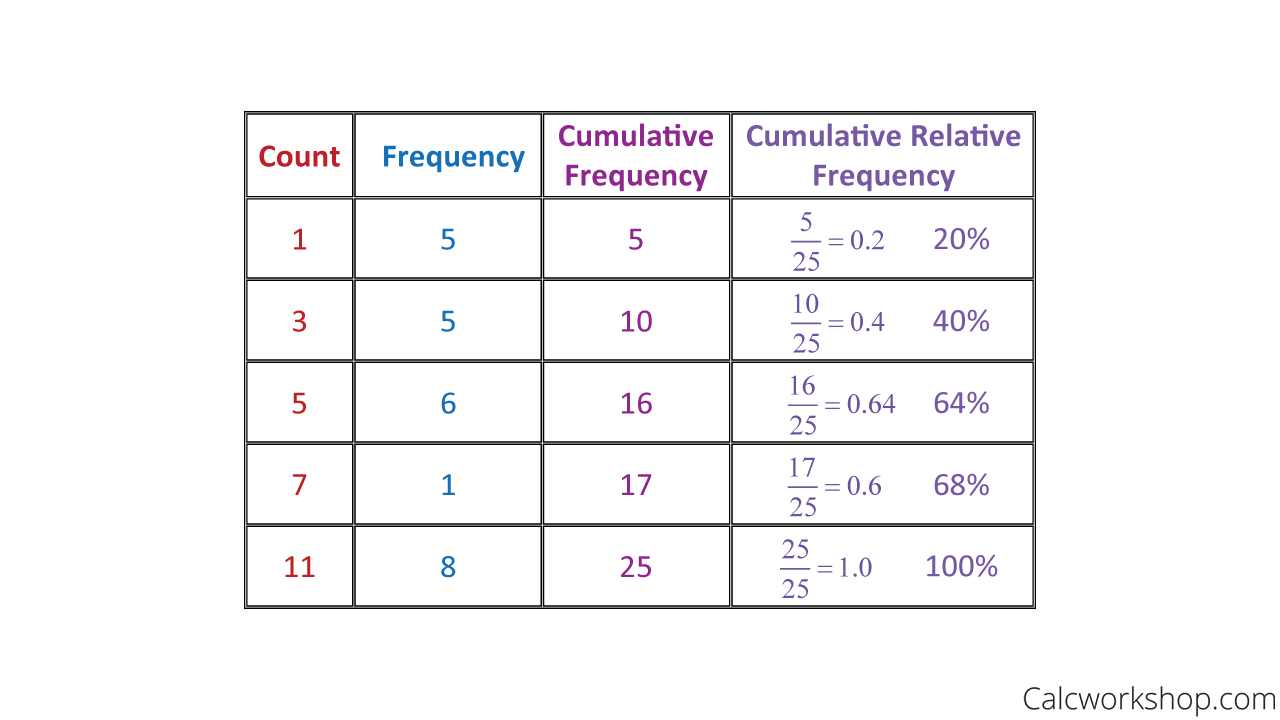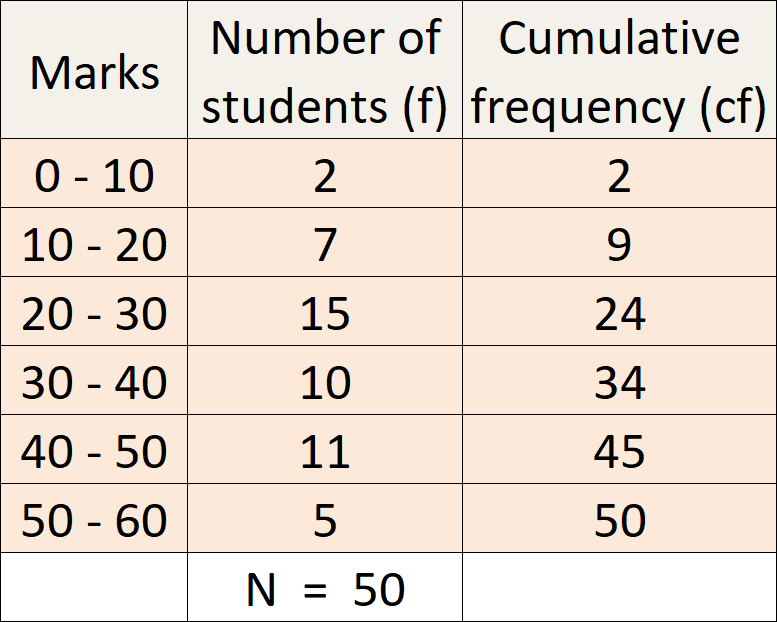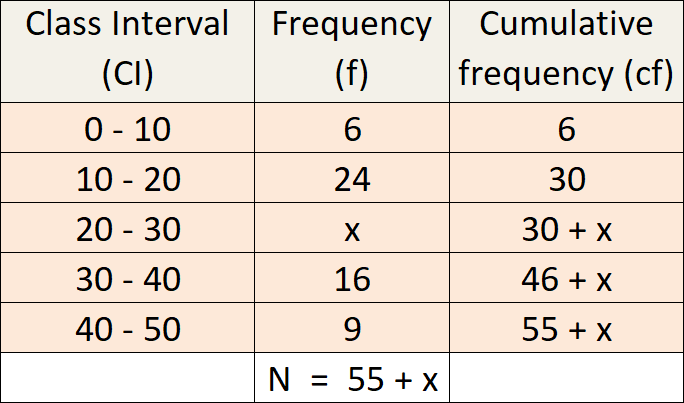Cumulative Frequency Calculator For Grouped Data
A relative frequency is a frequency divided by a count of all values. Mean Absolute Deviation for grouped data.

Cumulative Frequency Finding The Median And Interquartile Range For Grouped Data Youtube
Find Mean Median and Mode for grouped data.

Cumulative frequency calculator for grouped data
. Enter the Classes for X Separated by comma Enter the frequencies f Separated by comma Calculate. Cumulative frequency graphs are always plotted using the highest value in each group of data. Cumulative Frequency - Finding the Median and Interquartile Range for Grouped Data - YouTube. The cumulative frequency is calculated by adding each frequency from a frequency distribution table to the sum of its predecessors.Mean Absolute Deviation Calculator. Step 4 - Enter the require percentile number between 1 to 99. Mode. Steps for the calculation of Median.
Next line contains Y values with sepearated. Level 1 - Complete the cumulative frequency column of a table. Creating A Grouped Frequency Table To Find Mean And Plot A Cumulative Frequency Graph To Find The Median. Find the mean for the grouped data by dividing the addition of multiplication of each group mid-point and frequency of the data set by the number of samples.
Cumulative relative frequency distribution calculator is mostly used in statistical applications. Enter the data values separated by commas line breaks or spaces. Step 1 - Select type of frequency distribution Discrete or continuous Step 2 - Enter the Range or classes X seperated by comma Step 3 - Enter the Frequencies f seperated by comma. Xsum xsum2 n mean var stdev qlow med qhi iqr grouped_data_stats grouped_data Then for your print consider separating out your expression onto multiple lines for legibility.
Level 4 - Find averages from tables of grouped data. First line contains X values with sepearated. Level 2 - Complete the frequency column of a table given the cumulative frequency. Use this calculator to find the Mean Absolute Deviation for grouped raw data.
For sample click random button. How to use Decile Calculator for Grouped Data frequencies distribution. Mode is the value that has the highest frequency in a data set. To find mode for grouped data use the following formula.
How are cumulative frequencies and cumulative relative frequencies calculated for grouped data000 START024 calculate the cumulative frequency135. For grouped data class mode or modal class is the class with the highest frequency. This tool will construct a frequency distribution table providing a snapshot view of the characteristics of a dataset. Calculate the total frequency N.
Calculate the number of samples of a data set by summing up the frequencies. The cumulative frequency is calculated by adding each frequency from a frequency distribution table to the sum of its predecessors. The last value will always be equal to the total for all observations since all frequencies will already have been added to the previous total. Enter the details of the required number of intervals and click on the Calculate button.
The cumulative frequency is calculated by adding each frequency from a frequency distribution table to the sum of its predecessors. Mode Grouped Data. You can use this grouped frequency distribution calculator to identify the class interval or width and subsequently generate a grouped frequency table to represent the data. Find the mid-point for each group or range of the frequency table.
In simple Cumulative frequency is the running total of the frequencies. Step 1 - Select type of frequency distribution Discrete or continuous Step 2 - Enter the Range or classes X seperated by comma Step 3 - Enter the Frequencies f seperated by comma. Relative frequencies can be written as fractions percents or decimals. The calculator will also spit out a number of other descriptors of your data - mean median skewness and so on.
F_. Cumulative Frequency Graph recreate the table of values from the graph. To start just enter your data into the textbox below either one value per line. First of all your call to grouped_data_stats should not dump its results into a results list.
How do you calculate cumulative frequency for grouped data. Level 3 - Find averages from tables of discrete data. Try the given examples or type in your own problem and check your answer with the step-by-step explanations. Δ L i.
The cumulative plot always shows the number percentage or proportion of observations that are less than or equal to particular values. Type your data in either horizontal or verical format for seperator you can use - or or or space or tab. It is plotted on the vertical axis in a graph. The last value will always be equal to the total for all observations since all frequencies will already have been added to the previous total.
The last value will always be equal to the total for all data. Select Cumulative frequency just greater than or. Step 5 - Click on Calculate button for percentile calculation. How to use the calculator.
Next line contains Frequency values with. Cumulative Frequency - Finding the Median and Interquartile Range for Grouped Data. Try the free Mathway calculator and problem solver below to practice various math topics.

How To Find Cumulative Frequency W 11 Examples

Grouped Data Calculation 1 Mean Median And Mode

How To Calculate Cumulative Frequency 11 Steps With Pictures

How To Make A Cumulative Relative Frequency Table Youtube

Finding Median For Grouped Data

Standard Deviation Of Grouped Data Youtube

Finding Median For Grouped Data

Cumulative Frequency Distribution Less Than And More Than Youtube
Post a Comment for "Cumulative Frequency Calculator For Grouped Data"